PlayStation Home Machinima Advice: Ten Tips For the Aspiring Filmmaker
by NorseGamer, HSM Publisher
A fortnight since that April Fools Day “EOD Greenlight” article, and I’m still getting e-mails from various Home filmmakers, both aspiring and established (including some names that might surprise you) about how to get their machinima published in Home on the EOD — or even submitted for News Reader consideration.
It seems that article really touched a nerve; the availability of machinima tools means that there are more artists than ever looking to establish themselves, and at the same time there’s so much Home machinima out there today that only the really superlative material rises to the top. Add to that the fact that the EOD is practically everywhere in Home, I’m one of the primary gatekeepers for the EOD, HSM has a consistently strong presence on the News Reader, and I think the barriers to entry are significantly lower with HSM — there’s no paperwork to sign, since we’re not a for-profit venture — and it becomes clear that HomeStation is probably the easiest way for a machinimist to achieve that goal of appearing in Home.
So, what the heck. Let’s give some personal advice on the sort of machinima I would publish (and have published) on the EOD.
A few years ago, this article would’ve been ludicrous coming from me. I’m not Home’s best machinimist. But today I’m the guy who gets paid to create Home machinima as part of my job at LOOT, and I’m one of the two non-SCEE/SCEA primary gatekeepers for getting user-generated content into Home. More importantly, I’m self-taught as a Home machinimist, with no formal filmmaking training, and I’ve made enough crap machinima over the years to dispassionately look at what works and what doesn’t. So hopefully this advice helps you.
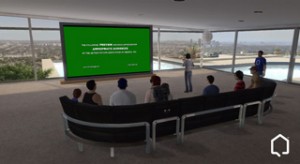 Before we begin: if you’re wondering how to get your own EOD channel, I have to tell you that while that’s not impossible, I think that’s a very, very tall order. The reasons why PSTalent and HomeStation have their own channels is because both organizations are comprised of professionals who don’t act like loose-cannon fanboys; they consistently produce quality products day in and day out. So you’ll probably have a much easier time of things if you go through either PSTalent or HomeStation. Levi’s got a long track record of producing quality machinima in Home, and if for some reason you don’t feel comfortable going through HSM, his organization is a good alternative.
Before we begin: if you’re wondering how to get your own EOD channel, I have to tell you that while that’s not impossible, I think that’s a very, very tall order. The reasons why PSTalent and HomeStation have their own channels is because both organizations are comprised of professionals who don’t act like loose-cannon fanboys; they consistently produce quality products day in and day out. So you’ll probably have a much easier time of things if you go through either PSTalent or HomeStation. Levi’s got a long track record of producing quality machinima in Home, and if for some reason you don’t feel comfortable going through HSM, his organization is a good alternative.
As an aside, with regards to going through HSM: I’m perfectly aware of the fact that within the somewhat incestuous Home media scene, this publication’s success has prompted some people to make up BS stories about me because they feel threatened (“Wait — aren’t you supposed to be a total asshole?” One media leader asked me when he first met me in person) — but the reality is that HSM, through me, is probably the easiest way by far to get your machinima and your writing into Home and seen by a hell of a lot of people. The door’s open. Choose to walk through it.
When it comes to Home machinima, the highest and best piece of advice I can give you up front is to focus on creating a product that means something to you. The best work comes from a place of personal passion. If your sole focus is on creating something you think someone else wants to see, you’re putting the cart before the horse.
Ask yourself why you’re creating something — and be honest with your answer. Necessity may be the mother of invention, but motive is its father. Generally speaking, non-developers create Home machinima for one of three reasons:
- Personal satisfaction and a need to creatively express;
- Audience generation, either for personal or professional reasons;
- Professional aspirations.
If the desire is purely a matter of personal satisfaction and a drive to creatively express, then ultimately you should be the only audience that matters. Since we’re human beings, however, we generally want to be lauded for our work — hence the question of what we can create that other people might care about enough to either want to participate in and/or offer praise towards.
Creating machinima with any sort of mass appeal in Home is, frankly, pretty difficult — particularly at this stage of game, where there’s no shortage of Home machinimists, and the novelty of simply seeing anything Home-related on YouTube (or elsewhere) has largely worn off. That said, there are a few types of machinima which tend to perform well:
a.) The music video parody/homage.
Cutting to popular music makes life a lot easier. And since the audience has (probably) seen the original video that went with the song, there’s a built-in emotional resonance that helps keep the audience engaged with the visuals you’re presenting. Some of Home’s most memorable machinima fall into this category; PSTalent’s “The Castle” and Alinea3’s “Alors On Danse” are two excellent examples (for my money, the latter is the best Home machinima ever created).
The catch with this particular category is that since you don’t have the commercial rights to the music, you can’t get your work showcased in PlayStation Home. While I can’t speak to the Community Theater’s current traffic numbers (although I’m familiar with what they were in the past), I can tell you that the LOOT EOD numbers are rather appealing, since the EOD is so widespread throughout Home.
This doesn’t mean anyone should give up, though. Some of the best Home machinima I’ve ever seen can never be broadcast in Home itself. Good material is inherently good material, and word of mouth can help build quite an audience and earn no small share of positive feedback.
b.) Newscasts and product reviews.
The best example of this would be HearItWow’s HomeCast series, along with the work done by mybro92 (a.k.a. KaptinFathead), homeboy79, and — when it comes to fashion — Jin Lovelace. People like to know what’s hot in Home, and these four filmmakers deliver that.
The catch with this sort of format is that it takes a tremendous amount of time to put together a newscast with decent production values, and since there’s new content coming out every week, the workload is enormous. Further, since SCEA has its own Virtual Item Showcase series which prominently runs in the SCEA News Reader, it may be hard to compete in this arena.
The benefit of newscasts and product reviews is that there’s a built-in audience for this sort of content, because the product is more utilitarian rather than creative. Whether or not you enjoy that sort of thing is up to you.
c.) Virtual tours.
Probably the easiest type of mass-appeal Home machinima to create. At its most basic level, this entails one long master shot of the user’s avatar running around a scene. While I personally don’t like virtual tours which are shot that way (frankly, I think it’s lazy), there’s no question that from a purely utilitarian standpoint, they do serve a purpose: they let a user see a scene without any extraneous production values or other advertising hocus-pocus.
The best estate tours I’ve seen come from the aforementioned mybro92 and homeboy79, who use cuts, overlays and voiceovers to make the work feel more engaging. This allows you, as a machinimist, to also act as a commentator. The downside is that it adds considerably to the production timetable.
d.) Creative storytelling.
This is possibly the hardest form of Home machinima to create (particularly if you’re using original music), because Home really does have some limitations when it comes to dramatic or humorous storytelling. The biggest obstacle is how to emotionally engage an audience when they know that what they’re seeing isn’t real; the human face (especially the eyes), along with the human voice, are enormous tools for communicating emotional shorthand, and it’s almost impossible to produce a decent facsimile of this in Home. When anyone can look like anyone, a sort of dramaturgical Uncanny Valley effect dilutes an attempt at dramatic or comedic impact, and unless you’ve got some really talented voice-over artists, that’s hard to compensate for.
The best way to circumvent this, in my view, is to frame shots in such a way that the whole picture itself conveys an emotion; someone with their back to the camera, silhouetted against a setting sun, is a powerful emotional image that doesn’t rely on face or voice.
A lot of people tend to aspire to this category, and quickly back out of it when they discover just how much work is involved in producing a creative-storytelling Home machinima that’s even halfway compelling. The work is, frankly, ungodly. If there’s one thing I can salute PSTalent for, it’s that DOD took on that challenge with this specific category and produced enough consistently watchable work at a sufficiently consistent output level that he was able to build a brand around it. I know firsthand just how much work goes into that, having built the HomeStation machinima brand largely on categories b and c above. (HSM may have a larger library of user-generated content in Home than anyone else, but that’s because we mostly stayed away from category d, which just sucks the time right out of you. Applause to DOD for being the guy who took on that challenge.)
Other machinima types would include art-house experiments, fake ads (which I love if done right), and videocast commentaries. However, the four categories listed above tend to be the most prominent, in terms of mass appeal.
I can’t tell you what to create. Ultimately, create what you feel like creating. Work created with burning personal passion is always a good place to start. That said, I’m going to offer some general Home filmmaking tips which anyone reading this might find useful.
1.) Shorter cuts are your friend.
Single biggest piece of technical advice I can offer. There’s way too much Home machinima out there that’s filmed in one long master shot, or at best has a few cuts in it. There is a vocabulary to good filmmaking, regardless of whether the medium is real or digital, and it’s a vocabulary anyone can learn.
Insert shots. Quick cuts. Reaction shots. Zooms. Keep cutting. Motion creates emotion. (One of the coolest techniques I love is the “Homicide” technique, which uses overlapping cuts of the same moment in time.) If you have a cut that’s longer than three or four seconds, there had better be a bleeping good reason to keep that shot for so long. This means you need more coverage, so you’re going to spend more time with setups and more time editing, but the results are night and day.
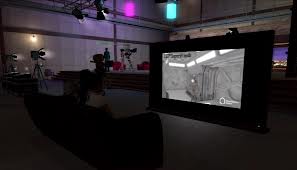
2.) Camera stability.
The most common mistake a Home machinimist makes: a slight correction (usually slightly panning left or right) during a shot, particularly a tracking or dolly shot.
If you make this mistake (and nearly every Home filmmaker does), throw that take away and reshoot. Go watch a typical movie or TV show; unless it’s shot to look deliberately handheld, you never see those sorts of on-the-fly camera corrections. If you absolutely love the shot you took and you need to dance around the correction (because, as gamers, it’s practically a reflex action that we miss until we’re looking at it during editing), then cut the correction itself out and make it look like a jump cut.
3.) Your backside is boring.
Home has a default camera angle: behind and slightly above your avatar. This is what we all stare at. Which means it should almost always be avoided.
One of the easiest ways to make Home visually interesting in a machinima is to either show avatars from angles not normally seen in Home, or remove the avatar completely if you want to grab establishing shots, cutaways, et cetera. This is easier to do in a private scene rather than a public scene because of the greater range of tools (and control over the environment) that’s available, but I can’t tell you how boring it is to watch some other avatar’s backside.
4.) Dancing is boring.
Unless there’s a really good reason to include this sort of footage in your machinima (The Lime Light’s very enjoyable “#SELFIE” video comes to mind, although that dance floor master shot near the end went on way too long), no one cares about seeing a bunch of avatars on a clubhouse dance floor. It’s been done to death. And, frankly, Alinea3 did it better than anyone else probably ever can.
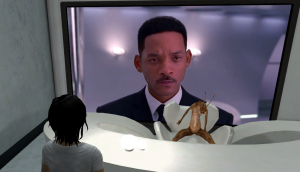 5.) Shorter running times are your friend.
5.) Shorter running times are your friend.
Better to have something that’s a compelling five minutes than a boring ten minutes. Better to have a brilliant two minutes than a compelling five minutes. And better to have a sublime thirty seconds than a brilliant two minutes. Distill what you want to say down to the shortest possible running time required to make that impact — and then make it. Roll in a grenade and come in firing. Attention spans are short enough as it is; the reality is that you need to hook your audience in the first few seconds — and keep hooking them — or you’re dead in the water.
(I know that sounds a bit odd coming from HSM, since this is a literary journal that champions long-form journalism, but when it comes to machinima, it’s a different ball game entirely.)
6.) Home machinima is at its best when it’s a one-man show.
I know I’m going to catch some flak for this, but unless you’re one of only a handful of truly prominent Home machinimists with a proven track record for quality and consistent output, you should be a one-man production studio. Do not rely on someone else to do something you can’t do. If you don’t know how to do something, learn.
The moment you begin relying on multiple people — even if it’s only one other person — you’re relying on someone else to help create your personal vision, and unless you’re paying them, that’s almost always a recipe for disaster. Particularly given how hard it is to film anything in Home, let alone something compelling.
The one exception to this is when you need other avatars in a scene for some very basic on-camera action, because then you’re not relying on them for post-production work. Even then, limit it to as few people as necessary. Crowd control in Home is very difficult, particularly if it’s a public scene you’re working in.
7.) Don’t include bells and whistles unless absolutely necessary.
Some Home machinimists can’t wait to show off their newfound technical skills after learning a trick or three from a tutorial video, classroom or somewhere else. The catch is that unless the effects are really necessary and blend well with the raw footage, it actually detracts from the final presentation, because it pulls the viewer out of the experience. Instead of it being about the presentation, it’s about a “look at what I can do!” moment. If you can convey an effect cheaply and simply, do it.
Example: the teaser for LOOT’s Doctor Who Silent costume.
That video took me seventeen minutes to create. Six cuts spanning eleven seconds, and it’s just an avatar doing the “Boo!” emote. Rendered with Windows Movie Maker, which is a free program that anyone can use (and a lot of Home machinimists do in fact use it).
And it’s an official LOOT promotional video, hosted by the BBC, with 57,502 views.
Like I said: I’m a low-tech schlub who doesn’t know a lot of filmmaking whizbangery. Don’t let that stop you. If you’re familiar with the Hindu concept of Jugaad — the idea of always looking for the simple fix or workaround — then you’re on the right track.
8.) Shoot in HD.
There’s no substitute for capturing Home in its native HD 720p resolution. In order to do this, you’ll have to acquire a PVR kit, such as the Hauppauge 1212, Elgato, or Roxio Gamepro. Yes, it means forking over some cash. Frankly, I consider it a litmus test as to whether or not you’re serious about machinima, both inside Home and beyond. There’s nothing wrong with using in-Home machinima tools such as the LOOT Active Camera or the Juggernaut Observer, but they’re limited to capturing Home in SD. For most amateur Home machinimists, that’s more than sufficient — but if you’re serious about this (and why the hell wouldn’t you be if you’ve voluntarily chosen to read more than four-thousand words from me on this subject), you need to capture Home in HD.
Don’t give me that look. You’re either serious about this or you’re not. Save up the bucks and bite the bullet. Having a PVR kit doesn’t guarantee you’ll be published in Home, but it gives curators like me one less excuse to TBNT you. And you can use that same equipment for other gameplay machinima beyond Home.
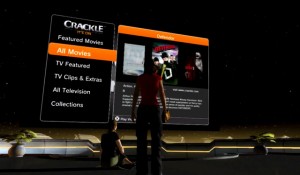 9.) Work more. Talk less. Self-motivate.
9.) Work more. Talk less. Self-motivate.
In a lot of the e-mails I’ve gotten from Home filmmakers, two sentiments have kept coming a cropper:
- Give me story assignments, because I want to know what you’re looking for.
- I need the guarantee of in-Home exposure to motivate me.
Word of advice: whatever you do, don’t open with the idea that you need to be guaranteed Home exposure in order to make it worth your while. You are not a unique and precious snowflake.
Let’s put things in perspective for a moment: the people who already have user-generated content featured in Home made it in there after years of hard work, with no promise of in-world publication and not even a roadmap of how to get noticed. Today, by comparison, HPG and LOOT have both made it much easier to get articles and machinima featured in Home — but that means it’s a much more crowded marketplace.
I hate to be so blunt about things, but put up or shut up. If you put in the work and you check your ego at the door, I’ll be your biggest cheerleader, because I’m constantly looking for content to publish on the EOD and/or submit to HPG for them to consider (naturally, SCEA and SCEE have final say as to what they want to put in their respective News Readers). HomeStation was built to be a high-visibility platform to showcase Home’s finest artists, filmmakers and writers, and the radar is always scanning for the next awesome story. But the work ethic and professionalism has to be there.
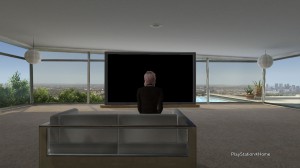 As for story assignments: I’m not the Font of All Wisdom for what’s entertaining to the Home community. Like everyone else, I’m looking to be blown away by something awesome — and because I like helping showcase other people, I’m in a position — after years of work to get here — to do just that. But I can’t hold your hand. This article is as close to a story assignment as I’ll ever give. Not to put too fine a point on it, but you’re the artist, and while I can (to a degree) handhold a writer, machinima is a much more time-intensive process — and between LOOT and HSM, I already have two full-time jobs.
As for story assignments: I’m not the Font of All Wisdom for what’s entertaining to the Home community. Like everyone else, I’m looking to be blown away by something awesome — and because I like helping showcase other people, I’m in a position — after years of work to get here — to do just that. But I can’t hold your hand. This article is as close to a story assignment as I’ll ever give. Not to put too fine a point on it, but you’re the artist, and while I can (to a degree) handhold a writer, machinima is a much more time-intensive process — and between LOOT and HSM, I already have two full-time jobs.
I’m looking for someone who can consistently produce high-quality work that’s Home-positive, Sony-positive and developer-positive. Simple as that. Anyone can talk a good game about their skills, their “crew,” et cetera — but, candidly, only a handful of Home machinimists have ever truly walked the talk. You know who they are. They’re the ones you’ve already seen in Home. The majority of them, I’m proud to say, are under the HomeStation banner.
It’s one thing to produce one really good machinima piece. That’s a feat unto itself. But the real question is whether or not you can do it again. And again. And again. There is a direct and proportional relationship between the Home machinimists who have made it the furthest and the amount of product they’ve produced — particularly if they don’t grow a big ego and are capable of self-motivating.
Want to film virtual tours? Be a tour guide. Want to film a virtual newscast? Be a newscaster. Want to film a series of art-house pieces? Fellini the (BLEEP) out of Home. For God’s sake, DO it. Don’t talk about it. All I care about is finished product. The rest is circle-jerking.
10. Be willing to be coached/criticized.
Creating quality Home machinima is an arduous, time-consuming process. And it’s the worst feeling in the world when you submit your masterpiece and it’s not met with absolute, unquestioning, parting-of-the-pearly-gates praise and acceptance.
No, I take that back. That’s the second-worst feeling. The worst feeling is when you look at your masterpiece again with those notes in hand and realize they’re all justified. And now you have to fight down the voice inside your head that’s telling you you’re not good enough, while you rip apart your work and reassemble it.
Look, I’ve been there. I create LOOT’s promo videos. It’s the greatest feeling on Earth when you submit a first cut and it’s accepted as the finished piece. That sort of slam-dunk I AM ALL THAT IS MAN elation is an addictive experience. The Hollywood Hills Night promo video, for instance, is a first cut slam-dunk.
But you know what? For every slam dunk, another video comes back with multiple rounds of notes. There’s one LOOT promo video — I’m not telling you which one — which went through fourteen recuts.
Fourteen.
Yeah, it’s a crap feeling. By the time you hit double digits, you’re ready to commit seppuku. But you suck it up and you do your job without protestation, because you’re either capable of getting the job done or you’re not.
It sucks when I give notes to a filmmaker and they subsequently wilt and fall silent. They keep forgetting that I want their work to be the best it can possibly be — not just because it’s representative of the HSM brand, but because I genuinely want to put a spotlight on other people and showcase their work as the best it can possibly be.
 Nobody likes criticism, particularly if you’re in the creative arts. But it’s par for the course. You think HearItWow wasn’t under a microscope every time he submitted a HomeCast episode to SCEA? You think homeboy79 wasn’t under a microscope when LOOT was so impressed with his work that we invited him to create “LOOTorial” videos for one of our games?
Nobody likes criticism, particularly if you’re in the creative arts. But it’s par for the course. You think HearItWow wasn’t under a microscope every time he submitted a HomeCast episode to SCEA? You think homeboy79 wasn’t under a microscope when LOOT was so impressed with his work that we invited him to create “LOOTorial” videos for one of our games?
The same goes for writing as well — as I sometimes joke with the team, if they think they have it rough, try being edited by SCEA Legal — but writing is something where the source material itself is available for editing. Not so with machinima. And hence why there are so few proficient and consistent machinimists in Home.
Which means that there’s opportunity. Seize it.
So now then:
Create something YOU feel like creating. A good product is a good product, and inherently attracts people due to its quality, regardless of the subject material. It’s frankly more important to make something that’s good than spend your time trying to chase the populist flavor of the week (trust me on this). Keep your production logistics as simple as possible and your running time as short as possible.
And, most importantly, only do it if it’s fun, whether one person likes it or a million people like it. You should enjoy the act of creative expression itself. Because if it ain’t fun — or it ain’t paying the bills — it ain’t worth it.
There’s always room — and demand — for innovation. One of the coolest Home machinima pieces I’ve ever seen is a stop-motion video in Home Square, which only used the built-in Home camera (that’s one way to create an HD machinima without a PVR!):
The guy who created that? Cubehouse. Who now works for nDreams, by the way.
Keep your chin up. There’s no getting around K. Anders Ericsson’s “10,000 Hour Rule” — if you want to become good at something, you have to do it — and keep at it — for a long time to gain enough of a baseline proficiency to begin making a real impact. It’s just a matter of whether or not you enjoy climbing the mountain to make your work even better. As you long as you enjoy the work itself, the results will, inevitably, speak for themselves.
You can’t control how anyone will react to something you create. But you can control the quality of that creation. To my knowledge, practically no one had heard of Alinea3, for instance, before she exploded on the scene with the best Home machinima we’re all ever likely to see. I would recommend focusing less on what you think people want to see — because you’ll get a million different answers — and focus instead on making what you want to see so good that others will want to share it.
Ultimately, I’m writing this because no roadmap document like this was around when I first dipped my toe into the waters. Then HearItWow came forward and wrote two outstanding pieces on Home filmmaking which I’m grateful to have been allowed to publish here at HomeStation, which in turn touched off a chain of events that ultimately led to HSM becoming the easiest conduit available for in-Home community machinima publication. So, just as I learned from him, hopefully I’m paying it forward to someone else.
Make something so good that it forces people to talk about it. Everything else will take care of itself.
Share
| Tweet |




 LinkedIn
LinkedIn Twitter
Twitter
I recently did a short fun video called ”Tent not right” and I was so rusty looking at my latest. I have been messing around with a Tron Legacy Home video idea but was scared off after my last Norsling ”jab” lol.
Article was spot on.
Next project just might be something no one has tried yet. Short strung together ”vine” type video. 10 second spots would be a challenge hmm?
Jers, straight up, man: I *like* your machinima. I think it’d be epic if you made a Tron Legacy Home film!
I freely admit I’m far from being Home’s best filmmaker. Most of the pre-LOOT machinima I created over the last few years I can’t stand to watch any more. But it takes going through that process to get to someplace even halfway decent. Now that I publish a lot of community machinima in Home via the EOD, I figured it might be worth offering some advice on how to avoid the learning-curve landmines I stepped on.
Ten-second spots are a challenge, but a good one to master. You know which machinima piece I did that got the most feedback from some interesting higher-ups within Home management? The infamous Doctor Who “SOON” teaser. Eleven seconds long, one sound effect, just one word, and the Home logo. People went bugnuts over that thing.
It’s amazing what happens when you really get the hang of ten- to thirty-second machinima. You get really, really good at distilling the point you’re trying to make into the shortest timeframe possible. Hence why we ran that fake advertising machinima contest last year: to get a lot of Home’s filmmakers thinking in seconds instead of minutes. The results were amazing.
Hearitwow told me ln ago not to let your shots run longand it’s so true. It’s like watching slide show video’s. Some times you might need to but as you mentioned keep it sharp, quick. I know the video shots take so much time to set up and thats all good but in your edits you have so much creative power to mke the MTV style video’s and vine type video’s need to go quick. thats my challenge to myself.
The Tron estate just needs some love. I will just do a walkthrough then pen it and shoot the heII out of it and see where it goes.
Your Dr. Who spot was classic but you know which video I liked best of yours. Second best would be the one you made with Melissa as it had a cool Sci-Fi vibe to it.
Swear though, Video’s are just Aawesome forms of creating your own vision, whatever that is. It stays with you in strange ways.